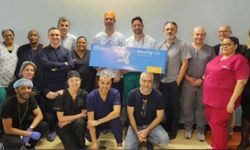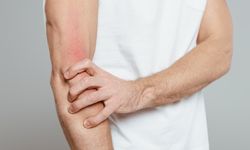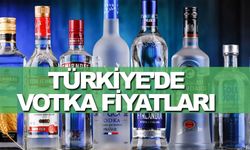HEAD AND NECK EXERCISE SHOULD BE DONE EVERY HALF AN HOUR
Op said that children's study tables and chairs should be ergonomic. Dr. Evren Fehmi Atay said, “When using computers, care should be taken that children sit in an upright position and the screen height should be adjusted accordingly. Care must be taken to sit in a way that supports the waist cavity, which we call lumbar lordosis. Children with vision problems tend to approach the screen, book, or notebook without realizing it. "If such behavior is observed, it will be beneficial for both eye health and postural health for families to take their children for an eye check," he says.
Emphasizing the importance of doing simple exercises to support the spine during long hours spent at the desk, Op. Dr. Evren Fehmi Atay said, “Since children are very dynamic, it is difficult to detect damage to the spine at a young age, but spine problems, pain and fibromyalgia manifest themselves in later ages. If children take a break from studying every half hour and do head and neck exercises, which can be easily found on YouTube, for a minute or two, they can eliminate many problems they may experience in the future. "With these habits acquired at a very young age, it is possible to get rid of many problems that may occur in adulthood and even old age," he says.
BEWARE OF GROWING PAINS!
Talking about the pain experienced by children during growing age, Op. Dr. Evren Fehmi Atay explains in which cases a specialist should be consulted as follows: “Every child feels minor pains in the growth cartilages during the growth period. This is caused by the growth cartilages being active and is colloquially called 'growing pains'. If the child played and ran a lot that day, pain in the heels may also be observed in the evening. Knee pain, which manifests itself with swelling in the front of the knee, is also a common condition, especially in boys aged 13-14. These pains increase with activity and decrease when activity is reduced. In this case, ice can be applied to the painful areas and it will be sufficient to reduce the movement slightly. However, we do not recommend sharp movement restrictions because the sedentary child is definitely a bigger problem. So, in what cases should you consult a specialist? Scoliosis begins to be observed in some children around the age of 11. In fact, mothers usually notice this situation by seeing their children's back bending during the bath. The angle of these curvatures is very important and if not treated correctly, it can be challenging enough to require surgery. In such cases, you should not forget to consult a specialist. Childhood rheumatism may also come to mind in children who have constant joint pain, regardless of movement. It is generally seen less frequently, but it is useful to check it. "In case of morning stiffness, joint swelling, pain and increased temperature, a specialist physician should be consulted."
DIRECT YOUR CHILDREN TO THESE SPORTS!
Emphasizing the need for children to engage in sports activities appropriate to their physical capacities, Op. Dr. Evren Fehmi Atay states that this is very important both physically, mentally and socially and continues his words as follows: “It is important that the musculoskeletal system that keeps the whole body upright is strong. Children with high physical coordination grow up in a balanced way and have a balanced adulthood and old age. We can talk about three sports that improve physique in the best way: The first of these is walking, and this is the simplest, most effective exercise that can be done at any age, from the age of 3 to the age of 93. The second is swimming. Swimming, in which all muscle groups work, is a great sport that supports muscle and bone development. The third sport is volleyball. Volleyball is a very effective exercise in which the lower and upper muscle groups work intensively and the risk of injury is quite low compared to other contact group competitions. “I recommend families to encourage these three sports.”










